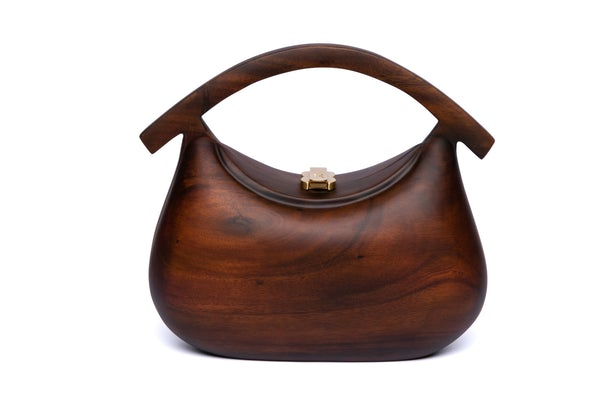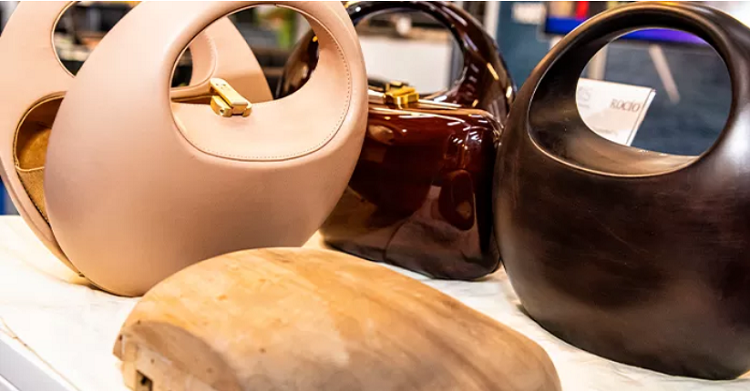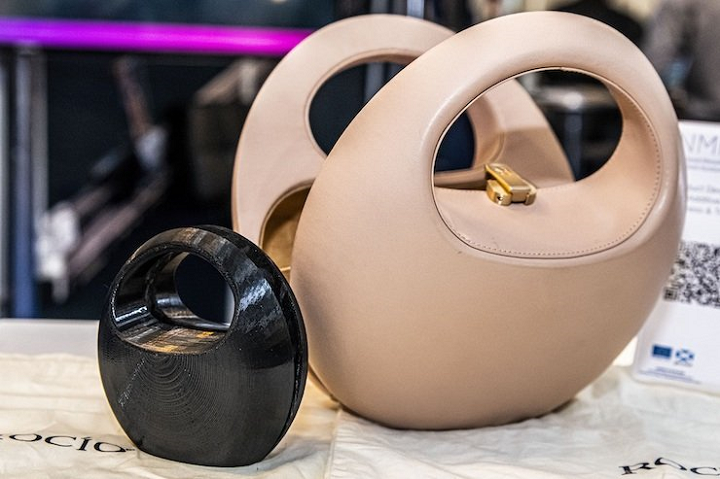When it comes to 3D printed fashion, I love it as much as I am skeptical of it. A lot of the 3D printed clothes I see, while gorgeous and unique, just don’t look comfortable or wearable, though this isn’t the case for every piece of 3D printed clothing. But I do think fashion accessories, such as purses and others, are a fantastic 3D printing use case with staying power, which is why I was so excited to hear that the National Manufacturing Institute Scotland (NMIS), which is no stranger to 3D printing, is using the technology to create more sustainable accessories for the runway.
The research center is operated by the University of Strathclyde, and has partnered with Scottish luxury eco-fashion brand ROCIO to reinvent its signature handbag. The brand is well-known for these decorative bags, and celebrities like Susan Sarandon and Kate Upton have been photographed while sporting them.
Traditionally, the handbags are sculpted individually in a lengthy 19-stage process from harvested acacia wood, and ROCIO was looking for a more sustainable, eco-friendly way to manufacture them. The brand wanted to learn more about 3D printing, which is said to be more sustainable than most conventional forms of manufacturing; plus, it allows for more customization, less waste, and the production of complex shapes and structures that most manufacturing methods can’t achieve. That’s how the R&D project and partnership with NMIS began.
“A core aim for NMIS is to engage with and support SMEs to facilitate a positive impact on the local economy and wider industry. We have a team dedicated to helping SMEs in their route to innovation and exploitation of new goods and services in response to industry needs,” said Andrew Brawley, NMIS Research and Design Engineer.
“The collaboration with ROCIO is a prime example of this and we hope this will be the beginning of a long-trusted relationship with the team at ROCIO as this new exploration showcases the endless possibilities available.”
In order to develop the handbag’s inner structure so it could be used as the base for more luxury fabric coverings, ROCIO combined the technology expertise of NMIS with its own craftmanship capabilities. The collaboration was funded by the Advancing Manufacturing Challenge Fund’s Additive Manufacturing Business and Technology Support (AM-BATS) project, which is itself partially funded by the European Regional Development Fund and European Structural Funds 2014-2020 Program.
By working with NMIS to use 3D printing in its design process and workflow, ROCIO was able to experiment with different design constructs and materials. Additionally, the brand should have an easier time scaling up its operations to meet increased customer demand by using 3D printing as well. The partners created a 3D printed prototype of the handbag, which has the same kind of structure as ROCIO’s original wooden bags; this allowed the brand to maintain its original silhouette and aesthetic.
Atelier, a fashion business school and fash-tech startup accelerator in Spain, took the 3D printed prototype and turned it into a fully structured leather handbag, which was a first for ROCIO.
“We are really taken aback by the results. We’re at the heart of sustainable fashion and take pride in each accessory being a uniquely creative masterpiece. The pieces produced are works of art and this unique leather handbag concept delivers outstanding beauty in a structured art form which I believe pushes the boundaries of design,” said Hamish Menzies, ROCIO Creative Director.
“For us, exploring the use of a 3D printed prototype is more cost, time and material efficient in the long term. Through using this technology, we are one step closer to improving our endeavours to be even more sustainable, whilst unlocking and embracing the future capabilities of our industry.”
The new ROCIO handbag is set to make its debut at Paris Fashion Week this March…all thanks to 3D printing!
Subscribe to Our Email Newsletter
Stay up-to-date on all the latest news from the 3D printing industry and receive information and offers from third party vendors.
You May Also Like
New Report: Semiconductor Industry to See $1.4B in 3D Printing Revenues by 2032
“The semiconductor sector has become the most strategically significant area of global industry.” Truer words are hard to come by when it comes to the modern world, and they are...
Will Photonic-Crystal Lasers Revolutionize 3D Printing?
Powder bed fusion (PBF) for metals and polymers predominantly utilizes lasers as the primary heat source. Some directed energy deposition (DED) technologies also employ lasers, while various vat polymerization methods...
3D Printing Unpeeled: Orbex Investment, IndoMIM and HP, Ultrasonic Waves
INDO-MIM has bought three HP Metal Jet S100 printers, operating two in India and one in Texas. This is a win for HP because the company has deep experience in...
3D Printing Webinar and Event Roundup: April 21, 2024
It’s another busy week of webinars and events, starting with Hannover Messe in Germany and continuing with Metalcasting Congress, Chinaplas, TechBlick’s Innovation Festival, and more. Stratasys continues its advanced training...



































